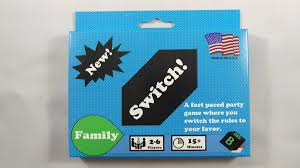 This is a non-player character (but can be used as a character) for the Tiny Frontiers Game in the Western Star micro-setting created by John D. Kennedy.
This is a non-player character (but can be used as a character) for the Tiny Frontiers Game in the Western Star micro-setting created by John D. Kennedy.Rupert Smith, human law enforcer for the town of Southridge on Missick
Born and raised on Missick isn't something most people are proud of, or talk about. Rupert, though, loves his home world. Even with all of its problems, Rupert believes that Missick is not the dead world others claim it to be, it's just waiting for the right time to emerge again. Rupert's positive beliefs go far beyond that of just having the world come back.
A few years ago Rupert's parents were killed. There is still a lot of mystery around their deaths because it happened during an Avonti raid. But, it didn't look like they were killed by Missick's native race. The Star at the time didn't do anything more about it, and the people of the small town of Southridge were on the verge of rioting. Things changed. The Star along with some others left the town, none have been seen from since. Rupert stepped up. He knew the most likely reason his parents were killed were because they were working on creating a town of peace, maybe even working with the Avonti. He accepted the position of Star with the belief that his parent's deaths would never be solved, nor justice being served.
He looked to the future. Deciding that he would carry on with dedication of solving the bigger problem his parents were trying to solve. He is helping the few people left in the town of Southridge to make a stable place with the best possible life they can create. They still have problems, but they are doing alright. And, because of the stability they are seeing a few more people come around from the outer reaches and even some who are using Southridge as a place to start from. With the growth Rupert turned out to be a good choice for Star.
 As the law of the town, the MMA gives Rupert full authority, and so do the people who are permanent residents. This is good for the town because it sits on the edge of a wasteland that many consider dangerous, but with possibilities. The people that come to town are soon encountered by Rupert and confirmed that the town is no place for problems. The people here are under his protection and that if they want to create issues, there is plenty of room north of town to find them. Rupert is quick to put down trouble in the town, but is fair in his jurisdiction. This doesn't mean that he is willing to let strangers, or even friends, get away with creating problems.
As the law of the town, the MMA gives Rupert full authority, and so do the people who are permanent residents. This is good for the town because it sits on the edge of a wasteland that many consider dangerous, but with possibilities. The people that come to town are soon encountered by Rupert and confirmed that the town is no place for problems. The people here are under his protection and that if they want to create issues, there is plenty of room north of town to find them. Rupert is quick to put down trouble in the town, but is fair in his jurisdiction. This doesn't mean that he is willing to let strangers, or even friends, get away with creating problems.When he can, Rupert explores the area around the town. His goal is to learn more about the native Avonti and to see if there are other resources to help the people he cares about. He has come across some sign of the Avonti and has been careful to show an interest, but respect for what he has found. He is not sure, but he believes this has led to some sort of peace agreement between the local natives and the people of Westridge. Although, some of the rougher prospectors that have come through town have not fared as well.
Rupert Smith, Human Star (Sheriff)
HP 6
Traits: charismatic, insightful, perceptive, prepared
Weapon proficiency and mastery: light range, laser pistol
If you have a comment, suggestion, or critique please leave a comment here or send an email to guildmastergaming@gmail.com.












